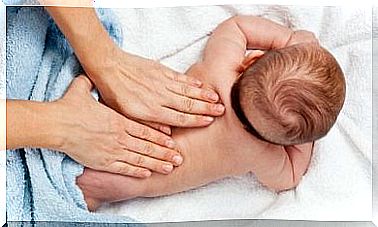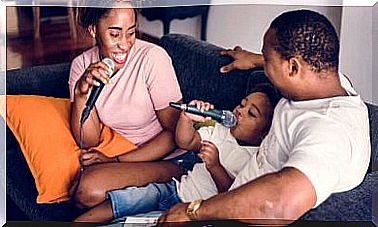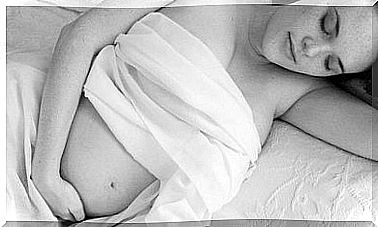Pushing During Childbirth, How Do You Do That?

The pushing during labor is a natural act that mothers do during labor to deliver the baby. Depending on the medical intervention or not, it can be spontaneous or supervised.
There are several stages that make up the process of childbirth. We speak of contractions when the mother exerts herself during the expulsion phase. These contractions have the function of facilitating the delivery of the baby through the birth canal.
After dilation, the contractions come on spontaneously. The mother begins to feel the urge to push along as the fetus looks for a way out.
In women who become mothers for the first time, this period can last up to 3 hours. In mothers who have given birth before, this phase is shorter, about 1 hour.
Ways to squeeze during childbirth
There are two ways to push during labour. The spontaneous pushing comes naturally and it is the mother who is in charge. We speak of assisted pushing when the delivery is supervised by medical staff. In this article, we will discuss both ways in detail.
Spontaneous pressing
In spontaneous contractions , the mother instinctively feels the need to push. Experts prefer this, because the birth is actually guided naturally by the mother herself.
They say that this does not change the process and duration of labor. However, studies show that it can reduce the need for medical intervention. It is also beneficial for the pelvic floor and minimizes the risk of tearing.
Guided pressing
During assisted pushing, the birth process is supervised by medical staff. In other words, the mother is instructed to push along based on her contractions.
People usually decide to push accompanied when the mother does not automatically notice that she has to push along. This can be done, for example, by administering epidural agents.

Disadvantages of guided pressing
- It increases the risk of damage to the pelvic floor structure.
- It increases maternal stress and fatigue.
- There is an increased risk of tearing and the need for cutting.
- Abnormal fetal heart rhythms may occur.
- It can cause urinary incontinence.
- Higher chance of assisted birth using forceps, vacuum pump or caesarean section.
How should you push along during the birth?
While it is normal for a mother to feel the need to push, it is important to match the intensity to the intensity of the contractions. When the two forces come together, the baby can descend quickly. When the baby’s head puts pressure on the mother’s pelvic floor, it triggers the instinct to push.
To do it properly, you need to apply force by contracting your abdominal wall while simultaneously pushing along. Where possible, it is important to combine the pushing with the contractions.
Breathing plays a very important role. A mother often has much more strength if she learns to control her breathing.
Here we will explain to you the steps to follow:
- Try to associate the squeeze with the contraction.
- Contract your abdomen and apply pressure downwards during labor.
- Control your breathing. Breathing well is important to maintain your strength.
What is the best way to squeeze?
Some experts believe that the conventional approach to pushing during labor should be reconsidered. They emphasize that the most important thing is that the mother’s body lets her know when and how to push.
They agree that guided pressing can be very helpful. However, they also believe that it should not just be done on a routine basis. This means that the management should not automatically be taken over by medical personnel.

According to the World Health Organization (WHO), it is best to allow mothers to push spontaneously. They also warn that it is important for mothers not to hold their breath while straining for extended periods of time.
Of course, the process also depends on the mother and whether she is noticing the signs of childbirth correctly.
In short, the most recommended way to push during labor is the spontaneous way that is not forced. It is important to wait for the contractions to allow the mother to regain her strength.
During your prenatal visits, you can ask your doctor about anything that may concern you.







